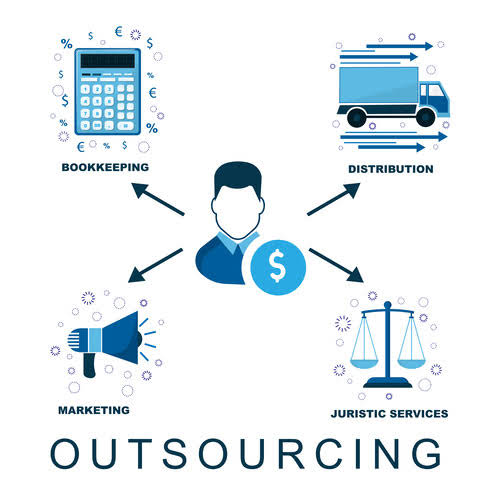Content

These expenses are considered assets because it provides economic value to the business in the future. It is recorded in the prepaid asset section of the balance sheet. Prepaid expenses are assets that can be found in a balance sheet that can be extracted from advance payments received from goods and services to be offered by a business in the future. The adjusting journal entry is done each month, and at the end of the year, when the lease agreement has no future economic benefits, the prepaid rent balance would be 0. The business’s records would show four months of insurance policy as a current, prepaid asset.
As such, vendors or suppliers agree to still do business with them knowing that they are already being paid. Organizations typically use a prepaid expense ledger to monitor the total amount of money spent on prepayments, when payments are due, and when they will be received. This helps ensure that companies are accurately accounting for their assets while also staying up-to-date with any upcoming liabilities. This method sees an expense paid in advance recorded as an asset. The payment of expense in advance increases one asset (prepaid or unexpired expense) and decreases another asset (cash).
Prepaid Insurance: Definition, How It Works, Benefits, and Example
Prepaid expenses are basically future expenses which have been paid in advance, with common examples being insurance or rent. These expenses are initially documented as an asset on the firm’s balance sheet, and as its benefits are eventually realised over time, they would then be classified as an expense. – Once the expense has been incurred and the asset is realised, an entry can then be made to the profit and loss statement’s expense account, whilst the balance sheet’s prepaid asset account may be deducted equally. The adjusting journal entry is done each month, and at the end of the year, when the insurance policy has no future economic benefits, the prepaid insurance balance would be 0. Prepaid expenses usually provide value to a company over an extended period of time, such as insurance or prepaid rent.
As a reminder, the main types of accounts are assets, expenses, liabilities, equity, and revenue. Prepaid expense amortization is the process reflected above in which the asset’s value trends to zero over the time that the prepaid expense is delivering its value to the company. On 1 September 2019, Mr. John bought a motor car and got it insured for one year, paying $4,800 as a premium.
What is an asset?
Upon signing the one-year lease agreement for the warehouse, the company also purchases insurance for the warehouse. The company pays $24,000 in cash upfront for a 12-month insurance policy for the warehouse. Under the accrual method of accounting, income is recognized when it is earned and expenses are recognized when incurred, regardless of when cash exchanges hands for the transaction.
- Prepaid insurance refers to the insurance premium paid before their insurance term.
- Due to the typical nature in which certain products and services are sold, the majority of corporations will possess at least one type of prepaid expense.
- To help keep track of your prepaid expenses, consider using an automation solution so that nothing slips through the cracks.
- His pieces range from finances and entertainment to religion and philosophy.
- Since this payment is usually made in advance, it is an asset to the individual or corporate organization that made the payment.
For the majority of businesses, handling prepaid expenses is a time-consuming and manual procedure that is extremely vulnerable to human errors. Nevertheless, Kolleno is a smart credit control software connecting all of the company’s accounting, communication, and payment systems into a centralised platform to streamline the entire documentation process. One popular example of a prepaid expense would be insurance because it always has to be paid early. During the first month of occupancy, the business records an adjusting journal entry to debit rent expense for $10,000 and credit prepaid expenses $10,000. The balance in the prepaid expense account at the end of the first month is, therefore, $50,000 and rent expense is $10,000. The $50,000 balance in prepaid expense appears on the balance sheet for the month, while the $10,000 rent expense appears on the income statement.
Expense method
A prepaid expense is recorded as a type of asset on the balance sheet and as an expense on the income statement when it’s utilized. Having a legal retainer is usually a necessity before a law firm, or an attorney can kickstart the representation. Thus, when a firm pays for a legal service retainer, the expense will be acknowledged as a prepaid expense on the balance sheet since the company has yet to benefit from the law firm’s Bookkeeping for Truck Drivers services. Assume that on December 1, a newly formed company pays $600 for insurance coverage for the six months ending on June 1. As of December 31, the company will report Insurance Expense of $100 and its current asset Prepaid Insurance will report $500. The prepaid amount informs the readers of the December 31 balance sheet that the company will not have to pay $500 in cash for insurance during the next five months.
The prepaid expense appears in the current assets section of the balance sheet until full consumption (i.e. the realization of benefits by the customer). The reason that prepaid expenses exist is because of accounting methods. To exemplify, the generally accepted accounting principles (GAAP) notes that expenses are to be recorded in the same accounting period as when the asset delivers its benefits.
Drive Business Performance With Datarails
During this period, companies must transfer the expired portion of the premium to the income statement. The journal entry for this aspect https://simple-accounting.org/understanding-the-cost-of-bookkeeping-for-small/ of prepaid insurance is as follows. The accounting treatment for prepaid insurance must consider two aspects of the account.
You can then choose to prepay for insurance again and this process will repeat. When you prepaid for an insurance policy, you will create an entry in your balance sheet showing $1,200 being credited from your cash account and then the same amount being debited to your prepaid insurance account. This amount will be amortized over the next 12 months ($100 per month) and this entry will be recorded on your income statement. A prepaid expense refers to future expenses that are paid in advance. Then, over time, as the asset provides its value, it gets recorded as an expense (on the income statement) during the same accounting period as when the asset delivers its value.

